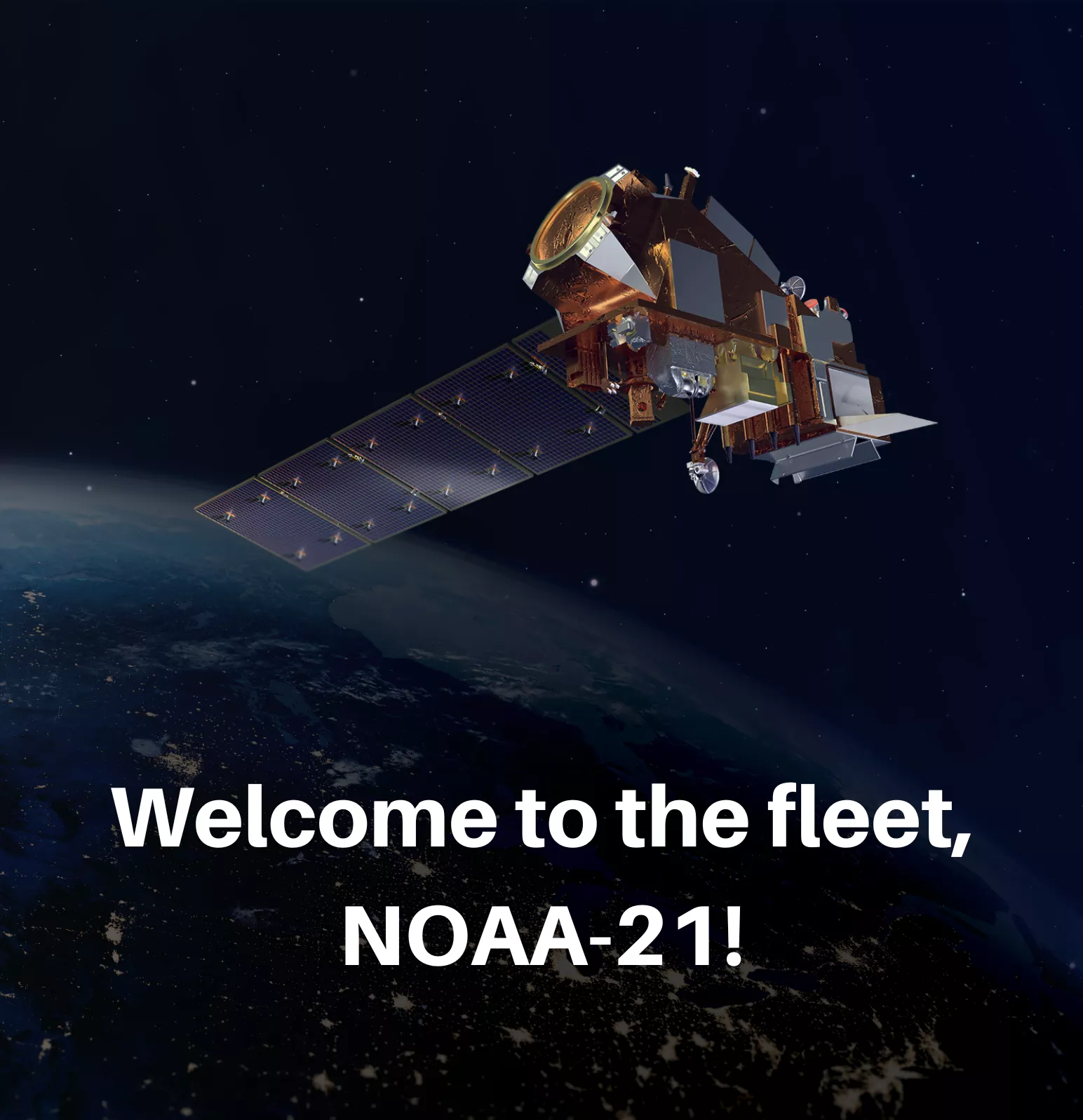
NOAA’s JPSS-2 satellite successfully launched from Vandenberg Space Force Base on Nov. 10 at 1:49 a.m. PST. This week, it was officially renamed NOAA-21.
The Joint Polar Satellite System (JPSS) series of satellites provides the latest advancement in observations gathered from a polar orbit. In the past, NOAA's polar-orbiting satellites were each assigned a letter (-A, -B, -C, etc.) as they were being designed, built, and launched. Then, once each satellite reached orbit, they were renamed and assigned a number. For example, the polar-orbiting satellite, NOAA-H, launched on September 24, 1988. When it reached polar orbit, it became known as NOAA-11.
The satellites that make up this latest series (JPSS-1, -2, -3, and -4) are a bit different. Instead of letters, they are designated by numbers during their development and launch phases. However, they still become NOAA-20, -21, -22, and -23 when they attain orbit, respectively.
The current JPSS system is made up of two satellites—the NOAA-NASA Suomi National Polar-orbiting Partnership (Suomi-NPP) satellite and NOAA’s NOAA-20. Launched in 2011, Suomi-NPP began as a research satellite and has served as the blueprint for the JPSS series, revolutionizing how long-range forecasts are made and long-duration climate fluctuations are tracked. Its sister satellite, NOAA-20 (previously known as JPSS-1), was the first of NOAA’s newest generation of polar-orbiting satellites that launched in 2017. Still in orbit, Suomi-NPP and NOAA-20 continue to work together.
When NOAA-21 is fully commissioned and operational, it will fly roughly 50 minutes, or half an orbit, ahead of NOAA-20. Suomi-NPP will orbit between the two, about 25 minutes away from each. NOAA-21 will become the primary satellite, NOAA-20 will become the backup satellite, and Suomi-NPP will become the third satellite in the JPSS constellation.
NOAA's polar-orbiting satellites travel 512 miles above the Earth, moving at 17,000 miles per hour. Like its predecessors, NOAA-21 will circle the Earth from pole to pole, crossing the equator 14 times daily to capture a full picture of the Earth twice a day. The vital information they collect about the land, oceans, and atmosphere below will help scientists gain a better understanding of our environment and help improve both daily weather and extreme weather forecasts.
Since JPSS satellites are designed to have roughly seven years of mission life, and the current fleet is aging, NOAA-21 will ensure that we have a robust and resilient constellation of polar-orbiting weather satellites for years to come.
Why do their names change from "JPSS" to "NOAA"? The change is to maintain consistency in the naming conventions that NOAA has followed since 1978 for polar-orbiting satellites. NOAA's satellites are typically built in sets or series, with the exception of Suomi-NPP, which was developed as a joint research mission and therefore not renamed a numbered NOAA satellite when it reached orbit.
NOAA-21 will be the 21st polar-orbiting satellite NOAA operates, ensuring a continuous series of global weather data to secure a more "Weather-Ready” Nation.